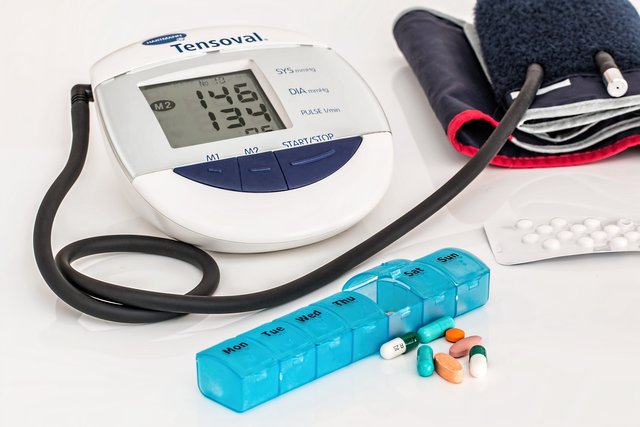
The tragedy is (not exaggerating) that high blood pressure (hypertension) is a disease, which contrary to a broken leg does not cause any pain. A man with a broken leg won't neglect therapy, because his body is yelling at him that something very bad is happening. But how it looks in the case of a comparatively dangerous disease like hypertension?
Let's take some statistics and trim a little to make it easier to imagine and remember them. We can estimate that half of the population of western countries have hypertension, but only half of those with the disease know that they have this problem! Moreover, in the group who know about it, only half have it medicated. That's not all... Among those who are medicated only half are medicated correctly, which means that they have the right medications prescribed, and they take those medications every day.
********half is sick
****half knows
**half is medicated
*half correctly
To realize the seriousness of the situation we have to deepen our understanding of this disease.
Blood pressure is a pressure under which blood is going through arteries. Arteries? Yes! It means blood vessels, which carry blood under relatively high pressure FROM the heart (do not confuse arteries with veins that carry blood to the heart).
Normal blood pressure is extremely important because it is demonstrated by clinical trials that blood under high pressure can destroy vessel walls (more strictly speaking the most vulnerable is the inner layer — so-called “endothelium”). Such lesions increase the probability of lots of complications — stroke, heart attack or renal failure. But how could innocent “overexert” cause, for example, heart attack?
Blood vessels are not the usual pipes, and their endothelium is not only inner lining. Cells comprising epithelium are producing many active substances, and on their surface, there are particles of many functions and properties.
When cells of the walls are damaged, they can cause that blood will solidify inside the vessel closing it (that‘s so-called thrombosis). Blood can also solidify in another place, and travel with a current of blood and close vessel there (that’s the so-called embolism). This way vessels may become closed in the heart or in the brain causing, respectively, heart attack or stroke. The damaged artery may also burst and blood will make its way to the surrounding tissue, for example, in the brain, causing another type of stroke (that’s so-called hemorrhagic stroke). Of course, damages of vessels doesn’t concern only the heart or the brain, but can cause a lot of different diseases like restriction of a blood supply to limbs, problems with vessels in an eyeball or renal failure.
Blood pressure is always written as two numbers. For example, normal blood pressure should be less than 120/80. But why the two numbers?
The heart is a pump that pumps blood through rhythmic contractions (usually there are around 70 of them for one minute). In the moment of contraction, blood is propelled into arteries — that’s why pressure inside them is rising. During the moment of relaxation, blood remains in the heart, and the pressure in arteries decreases. Notation 120/80 means that pressure during contraction (systolic pressure) is equal to 120, and pressure during relaxation (diastolic pressure) is equal to 80.
Even though normal pressure is equal to 120/80, we can diagnose high blood pressure (disease is called hypertension) when the pressures surpass 140/90 (measured at the doctor’s office). Only one of these two values (systolic or diastolic pressure) is sufficient to make a diagnosis. Because people are usually more relaxed at home, the threshold values are lower (135/85) when the pressure is measured at home.
To summarize — make sure, you have a good understanding that high blood pressure is a disease. Moreover, it needs to be treated. Only then many tragedies could be avoided.
P.S. If you have found mistakes in my English writing, I would be very grateful if you would let me know about it. If you want to read about a specific subject within the field of medicine I want to encourage you to write a comment below.